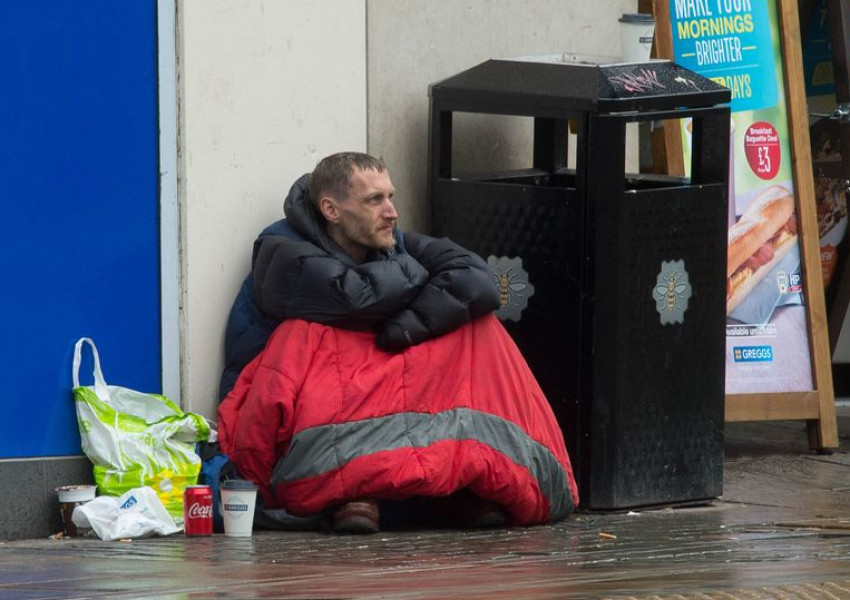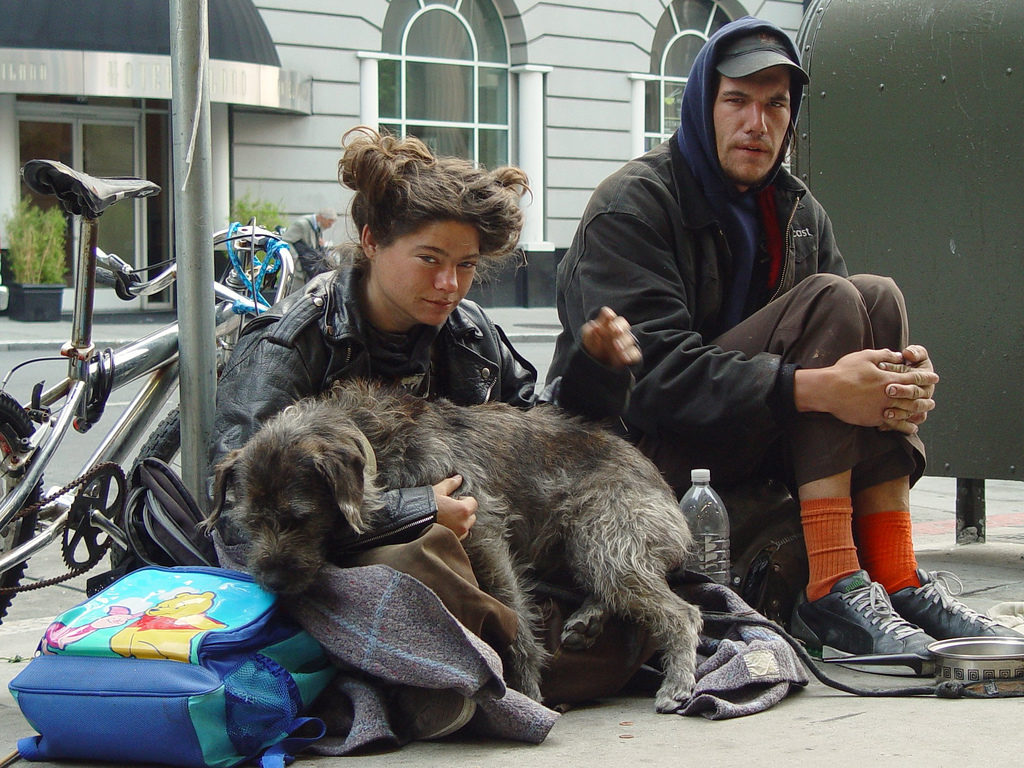
The current rates of homelessness and risks to those who experience it are among the greatest stains on our collective societal conscience. It is estimated that there are 400,000 people who are homeless in the UK at any one time, with an almost threefold increase from 2010 in those having to sleep rough, currently estimated at 4,751 on any given night. In London alone, it is estimated that 8,000 people slept rough in the 2016/17 period (Rough Sleeping Statistics, 2017).
A previous elf blog by Nikki Newhouse on homelessness and mental illness in children and young people highlighted very high levels of psychiatric disorders and relatively low levels of access to mental health services, suggesting barriers to mental health care for young people who are homeless.
In light of these sobering statistics, it is crucial that we analyse the impact of homelessness on the health of both sufferers and their children. Nilsson et al. (2017) offer valuable insight into the impact of parental homelessness on child and adolescent psychiatric disorders in a nationwide, register-based, cohort study.

There are 400,000 people who are homeless in the UK at any one time.
Methods
The study population consisted of children and adolescents living or born in Denmark between 1st January 1999 and 31st December 2015, identified using the Danish Civil Registration system.
Children and adolescents having a parental history of homelessness was the main exposure, data on which were collected from the Danish Homeless Register.
Information regarding child and adolescent psychiatric disorders was collected from the Danish Psychiatric Central Research Register and the Danish National Patient Register, using ICD-10 diagnostic categories. A hierarchy of mutually exclusive categories of disorder were used with the diagnosis that was either most recent or in the highest category considered in analysis.
For the main analyses, they used two key covariates: maternal and paternal history of homelessness, and two psychiatric covariates: overall and hierarchical.
The outcome measured was the diagnosis of any psychiatric disorder up to 16 years. Further, in a separate analysis, 14 individual subgroups of disorder were identified. Participants were followed up until any diagnosis was made and then in each subgroup until the diagnosis of that particular disorder.
The authors also considered the time of the parent’s first report of homelessness in relation to time of the offspring’s birth (before the year before birth, the year before birth or from birth and onwards) and the relationship between this timing and the offspring’s risk of psychiatric disorder.
The authors created a separate category of ‘more severely homeless’, defined as contact with at least three homeless shelters.
Results
- 1,072,882 individuals aged between 0-16 years were included in the study. 51% of the participants were defined by the authors as boys
- 2% of participants had one or two parents with a history of homelessness
- 5% of participants were diagnosed with a psychiatric disorder during the study period
- Incidence of any psychiatric disorder, measured in cases per 1,000 person-years was 2.5 times greater in those with at least one parent who had experienced homelessness, compared with those lacking this exposure
- In fully adjusted analyses, the risk of psychiatric disorders in participants was lower if only their father had experienced homelessness, compared with those participants with a maternal or bi-parental history of homelessness
- The highest incidence rate ratio (32.5) was found for attachment disorder in participants who had two parents with a history of homelessness
- The risk of developing psychosis or ADHD was also found to be increased when only the mother had a history of homelessness, compared with only the father having this history
- When adjustments were made for parental psychiatric disorders, there was no increased risk of affective and eating disorders in participants with a parental history of homelessness
- Comparing mothers with a history of homelessness and psychiatric disorder with those mothers who experienced neither, an incidence rate ratio (IRR) of 2.8 was found for offspring psychiatric disorder
- By around 15 years, 1/3 of offspring who had a mother with a history of both homelessness and a psychiatric disorder had received a psychiatric diagnosis themselves
- The authors found that the risk of offspring developing a psychiatric disorder was independent of the time of first homeless shelter contact, indicating that a period of homelessness at any time is indicative of long lasting instability of the home environment. This instability may manifest as the absence of positive parenting role models and a concomitant history of adverse life events. Further, this is likely exacerbated by untreated medical conditions and emotional and behavioural disorders
- Offspring of formerly homeless mothers were at greater risk of developing psychiatric disorders than those of low-income housed mothers.

“Incidence of any psychiatric disorder… was 2.5 times greater in those with at least one parent who had experienced homelessness…”
Conclusions
The authors concluded that they:
showed an association between mother’s and father’s history of homelessness and offsprings risk of any and specific psychiatric disorders during childhood and adolescence, even after adjustment for parental psychiatric disorders.
They further conclude that:
risk was especially high for attachment and substance use disorders.

Children of parents who had experienced homelessness were at especially high risk for attachment disorder and problems with substance misuse.
Strengths and limitations
An important strength of this prospective study is the use of a nationwide and almost complete cohort, with accurate matching to parental use of homeless shelters. The authors believe this makes the study generalisable to other high-income countries with well-developed social support systems. However, this generalisability may be limited in countries where austerity measures have resulted in radical cuts to social welfare.
In this study, homelessness was defined by contact with a homeless shelter and the Danish Homeless Register was used to measure this. This limits the study as only reporting on those who had made successful contact with a shelter and is unlikely to reflect the entire population of those experiencing homelessness. Similarly, the categorisation of ‘severely homeless’ as those who have had three homeless shelter contacts seems invalid. One could argue that a more severe experience of homelessness is one in which a person is unable to engage with available services and is ‘sleeping rough’. Furthermore, there is no information on the experience of individuals between homeless shelter contacts.
Parental homelessness likely constitutes a range of adverse life events for offspring and not simply a singular phenomenon. One study (Masten et al., 1993) found that parental distress and recent life events are the primary predictor of children’s behaviour problems rather than housing, as Nilsson et al. (2017) suggest.
Furthermore, the authors identified that there may have been residual confounding as they had no information on factors such as the amount of time parents spent with their children, parental emotional status, as well as the potential for undiagnosed disorders.

Parental homelessness likely constitutes a range of adverse life events for offspring.
Implications for practice
The development of a psychiatric disorder carries with it the potential to limit a young person’s life chances and feedback into a cycle of poverty that may have been responsible for precipitating that disorder. As such, eliminating homelessness must be a public health priority. There needs to be a greater focus on research into effective prevention strategies to safeguard vulnerable groups at risk of becoming homeless. In addition, this study highlights the need for greater surveillance and support for marginalised families, so that early intervention can be offered in the event of development of a psychiatric disorder.

This study highlights the need for greater surveillance and support for marginalised families, so that early intervention can be offered in the event of development of a psychiatric disorder.
Conflicts of interest
The author has no conflicts of interest to declare.
Links
Primary paper
Nilsson SF, Laursen TM, Hjorthøj C, Thorup A, Nordentoft M. (2017) Risk of psychiatric disorders in offspring of parents with a history of homelessness during childhood and adolescence in Denmark: a nationwide, register-based, cohort study. Lancet Public Health. 2017 Dec;2(12):e541-e550. doi: 10.1016/S2468-2667(17)30210-4. Epub 2017 Dec 5.
Other references
Rough Sleeping Statistics Autumn 2017, England (Revised) (PDF). Ministry of Housing, Communities and Local Government, 2018.
Masten, A. S., Miliotis, D., Graham-Bermann, S. A., Ramirez, M., & Neemann, J. (1993). Children in homeless families: Risks to mental health and development. Journal of Consulting and Clinical Psychology, 61(2), 335-343.
Photo credits
- Photo by Brytny.com on Unsplash
- Franco Folini CC BY 2.0
- Photo by Fancycrave on Unsplash
